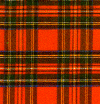 |
King's Own Scottish Borderers |
| Formation |
FormationThe Regiment was formed by Royal Warrant at Edinburgh Castle on 18th March 1689 as the Earl of Leven's or Edinburgh Regiment of Foot. The Regiment was raised to protect Edinburgh from the threat of armed resistance by Catholic rebels following the establishment of the protestant King William III (William of Orange). David, the third Earl of Leven, who commanded the regiment, was a Scottish expatriate who had landed with William at Torbay in 1688. His father, the first Earl Leven, Alexander Leslie, (1580-1660) commanded the Scottish army that fought on the side of Parliament in the English Civil War and took the surrender of King Charles I at Newark, Nottinghamshire in May 1646. After six redesignations but no amalgamations the Regiment was redesignated as The King's Own Scottish Borderers on 1st May 1887 and has remained as such ever since. Early HistoryAfter formation the regiment served in Scotland including fighting at Killiecrankie on 27th July 1689 where the Regiment and Hasting's Regiment (now the Somerset Light Infantry) were described as saving the honour of the Army. In 1691 the Regiment joined the army in Ireland (siege of Ballymore, assault on Athlone, battle of Aughrim, sieges of Gallway and Limerick), and later Flanders for the 1692 War of the League of Augsburg where it participated at Steenkirk, Landen, and the 1695 Siege of Namur - the Regiment's first battle honour. The Regiment returned to Edinburgh following the Peace of Ryswick and remained there for 13 years during the reign of Queen Anne.
Later in 1745, for the last time, Stuart factions in Scotland raised a rebellion, the famous 'Forty-Five' and the Regiment returned to take part in the battle of Culloden. The Seven Years War (1756-1763)The Regiment fought at the glorious battle of Minden on 1st August 1759 where six Regiments of British Infantry, some 2,000 men in total, advanced alone against 10,000 crack French Cavalry and defeated them. For their prowess at Minden, the Regiment (and the 12th, 20th, 23d, 37th, and 51st) were granted leave to carry a laurel wreath on their colours and equipment. Also on Minden day each year the men wear roses in their Glengarries from the tradition that at Minden the regiments marched through flower-gardens, and most of the men wore roses as they went into action.
The Napoleonic Wars (1793-1815)Uncharacteristically, and along with some others the Regiment served as Marine Infantry for a period commencing 1794. India and PakistanSouth Africa
The First World War (1914-1918)At the outbreak of the First World War the 1st
Battalion was in India and the 2nd in Ireland. The 2nd was
among the first units to come to grips with the enemy, playing a
heroic part in the retreat from Mons in 1914 including the desperate
battle of Le Cateau, in the so-called Battle of the Marne, and on
the Aisne. In the hard fighting around La Bassee and Neuve
Chapelle it played a leading part and other Battalions, newly raised
for the war, went to France as 1915 wore on. In September
1915, at the battle of Loos, Piper Daniel Laidlaw of the 7th Battalion
won one of the most famous VC's of all time for playing his pipes
up and down the trench during a critical moment of the fight.
The Regiment was represented at the Somme in 1916, at Arras and
Vimy Ridge in 1917, and in the desperate fighting in the spring
of 1918. Three other VC's were won, one in the 5th Battalion,
and two in the 1st. The Second World War (1939-1945)The Regiment were involved in campaigns throughout Burma and in the Battles of Dunkirk, D-Day and Arnhem. The 1st Battalion was early on the continent and fought its way stubbornly back to Dunkirk, landing in Normandy in 1944 and amply revenged itself before reaching Hamburg around VE Day. The 2nd fought for three years in Burma. The 4th and 5th Battalions were in the 52nd Lowland Division, which trained as mountain troops. They landed on the Island of Walcheren and fought in the assault on the island. The 6th Battalion shared the fortunes of the 15th Scottish Division, fighting across three countries into Germany. The 7th was dropped at Arnhem and suffered its full share of the heavy casualties suffered there. Wars since 1945In April 1951 the 1st Battalion sailed from Hong
Kong for Korea destined for hard fighting against the communist
forces. The month of October showed increased activity, and on 4th
November the enemy launched a ferocious attack heralded by a bombardment
at the rate of 100 shells per minute. The battle went on all night
against an enemy reckoned to outnumber the defenders by 10 to 1.
Our men held the ground and Private William Speakman won the VC. Intermediate Regimental NamesThe Regiment had six intermediate designations from its formation including an unsuccessful association with Sussex
|
In veritate religionis confido (I trust in the truth of my belief) A motto chosen by King George III and conferred on the Regiment when the title was changed in 1805 Nisi dominus frustra (In vain without the Lord) The motto of the City of Edinburgh The 2nd KOSB march to St Giles' Cathedral, Oct 1912 for the ceremony of Laying-up the Colours. Regimental Tartans
|
||
 During
the rebellion of 1715 the Regiment fought at the indecisive battle
of Sheriffmuir. The Regiment then spent time abroad including:
During
the rebellion of 1715 the Regiment fought at the indecisive battle
of Sheriffmuir. The Regiment then spent time abroad including:
 After
Minden they continued at the battles of Warburg, Campen, Fellinghausen
and Wilhemsthal.
After
Minden they continued at the battles of Warburg, Campen, Fellinghausen
and Wilhemsthal.



